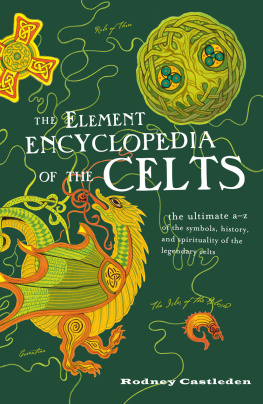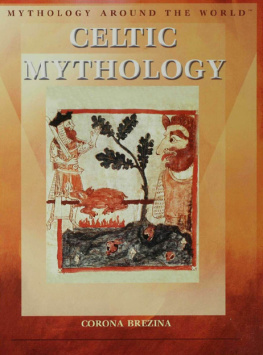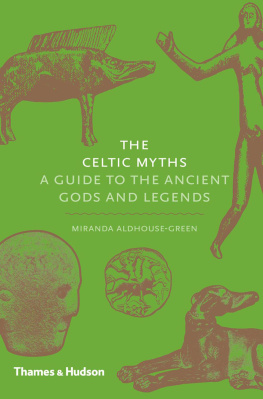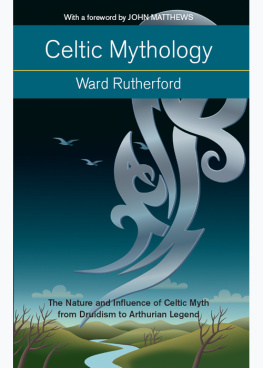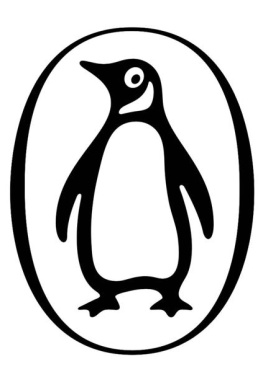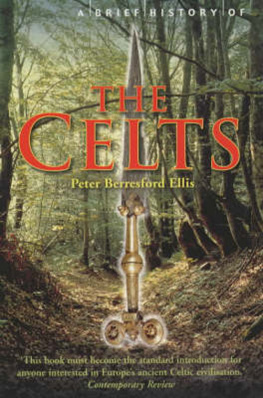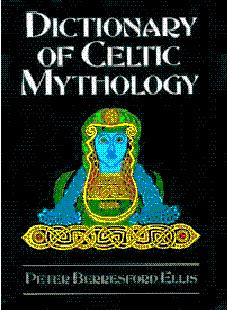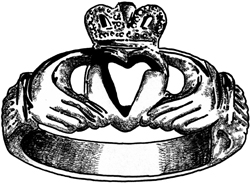This book is an attempt to explore the entire spectrum of Celtic culture. Each of us carries, sometimes consciously, sometimes unconsciously, a particular image of the Celts and their culture. It is like a distinctive and familiar smell or flavor that we recognize as soon as we encounter it.
To some Celtic means the soulful, echoing music of harps or bagpipes, or a particularly plaintive style of singing, while to others it means a political movement striving to createor restorea regional identity. To some it means modern team games, while to others it means clans and tartans. To some it is a wild, rocky landscape with mist, sea spray, and the roar of breaking waves, while to others it is dissent, tribal warfare, and the world of Braveheart. To some it means ancient legends about dragons, King Arthur, and the Lady of the Lake, while to others it means a lost empire that more than 2,000 years ago spanned Iron Age Europe.
With so many different contemporary takes on Celticness, it will be useful to explore where these ideas have come from. Those who are Celts may want to relive what Thomas Moore called the pride of former days and bring that pride into the present, but to do that honorably there is a need to be honest about the past.
One important idea that will emerge from this book is that the nature of Celticness has changed through time, and that means that we need to look at the Celts of 2,000 years ago, look again at the Celts of the Middle Ages, and look yet again at the Celts of today. In order to reach the true nature of Celticness, we have to establish who the Celts wereand who they are.
W HO W ERE THE C ELTS ?
For many people, the word Celt conjures two different images; two quite different personalities. One is hot-blooded, fiery, passionate, quick to take offense, volatile, and argumentative. The other is quiet, nostalgic, thoughtful, contemplative, mystical, and in tune with the natural world and also with the world of the spirit. These are two quite different personalities, but they complement each other. They are the two sides of an ancient Celtic coin: the Janus faces of Celticness.
The Celts have tended to dwell on their past, forever looking back to days of former glories and brooding over past defeats. The ancient and medieval Celts loved to tell stories about their tribes, their leaders, their heroes, and their gods. Sometimes there was a practical value in this. Kings and princes needed to justify their positions of privilege, and their ancestry was an integral part of their title. I am your king because my father was your king and his father before him They needed bards to recite their genealogies so that their subjects were regularly reminded of their lords pedigrees. Sometimes these genealogies included glamorous imaginary heroes and the recitation of the family tree developed into entertainment.
Storytelling has always been an important element in the Celtic psyche, and the edge between story and history has always been blurred. But a story, or the complex web of interlocking stories that made up the tribal myth, was what held Celtic society together. Every community needs an idea of itself in order to survive, a clear self-image that makes it possible to tell the difference between itself and other communities. This was why one tribe adopted one totem animal and another tribe adopted a different animal, and why one tribe adopted one species of tree, and another tribe a different species. We are the elm people. We are the oak people. We are different. That sense of special identity has always been important.
An important theme in this book is that the key to that sense of identity has changed through time. The basis, the foundation, of Celticness is not the same now as it was. What I hope to show is that in spite of this the roots of Celticness are deep; they are thousands of years old, much older than most modernday Celts realize.
PEOPLE WE KNOW
Sometimes we think of that early world of the Celts as being an anonymous tribal world, a place where we know no one. In fact we know a surprisingly large number of people who lived in that world and we will be meeting some of them in the first section of this book.
There were several kings in Britain whose names are known: Cassivellaunus (or Caswallawn), Cunobelin (or Cymbeline), Caratacus, Cogidumnus, Cartimandua the client queen of the Brigantes, Boudicca the warrior queen of the Iceni, Diviciacus the Druid king who visited Rome and befriended Cicero, and Vercingetorix the heroic Gaulish king who surrendered to Caesar rather than see his horses, or any more of his companions, killed. A few centuries later we stumble upon St. Patrick, St. Columba, and the ever-mysterious, ever-elusive figure of King Arthur.
Arthur has somehow moved across from history to myth, acquiring the character of a Celtic god along the way, and some of the mystification surrounding his life may reflect the religious beliefs of the time. Another section of this book is devoted to these beliefs.
The spirit world was integrated into the everyday Celtic world in a way that it no longer is today. There was no separation between the people and the spirits: the gods and goddesses who inhabited and controlled everything. The spirits were seen as residing within the natural features of the landscape. Every hill and headland, and every stream and spring, every forest and marsh had its own in-dwelling spirit. Worship was a matter of communing with the spirits in the places where they lived. People went to riverbanks to commune with the spirits of the river. They went to springs to commune with the sprites who looked after those magic places where life-giving water seeped out from the Underworld. There were temples and shrines, but a great deal of the mediation between the everyday world and the spirit world went on out in the landscape, in the open air.
Another section of this book looks at places that have special associations with the Celts: their settlements and strongholds, the scenes of their famous victories and defeats in battle, their sanctuaries and cult places.
There is also a section about the symbols and archetypes that underpin the culture of the Celts and another looking at a selection of their myths, legends, and folktales; the Celts have always been great storytellers.
The final section is a brief overview of the last thousand years or so of Celtic history, which falls into two halves. One is a phase of suppression and eclipse which I call the Celtic twilight. The second is a phase of rediscovery and re-emergencethe Celtic revivalwhich brings this review of the Celts up to the present day.
To go back to the beginning, the origin of the people first named the Celts by classical writers has long been the subject of speculation and discussion. The Celts of the Iron Age have an aura of mystery about them because, like the Minoans, they did not leave us any written literature of their own. There are some inscriptions and a fragmentary calendar, but there is no literature as such. The ancient Celts, either deliberately or inadvertently, surrounded themselves with mystery, like the hero Caswallawn with his magic plaid of invisibility.

